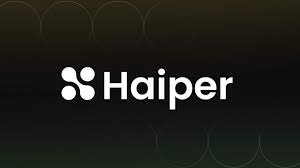1. India’s first driverless metro train aided by AI


The Bengaluru Metro Rail Corporation Limited (BMRCL) received the first set of six train coaches, which are part of the Communication-based Train Control (CBTC) system for its under-construction yellow line last month. It is now set to undergo various safety tests.
The 18.8 km long line, connecting RV Road and Bommasandrta, will be the first to have a driverless train. The route connects south of Bengaluru to the city’s tech hub, which has offices of companies such as Infosys, Wipro, and Tata consultancy services. It is also expected to decongest the traffic on Hosur Road, which borders Karnataka and Tamil Nadu.
A fully elevated route with 16 stations, the line connects with the existing Green Line of the Bengaluru metro at the RV Road station and with the Pink Line at Jayadeva Hospital station. Here’s a breakdown of the new train, which will also use artificial intelligence (AI) for the first time.
AI will be used to monitor tracks on the new line for the safety of operations. AI algorithms can analyze data from sensors to detect anomalies such as cracks, wear and tear or other irregularities along the track. Cameras mounted on trains can capture visual data and AI-powered systems can analyze it in real-time to detect safety concerns.
2. Sweden finally joins in NATO Alliance


Sweden joined NATO in Washington on 7 March 2024, two years after Russia’s Invasion f Ukraine forced it to rethink its national security policy and conclude that support for the alliance was the country’s best guarantee of safety.
Swedish PM Ulf Kristersson handed over the final documentation to the US govt. The last step in a drawn-out process to secure the backing of all members to join the military alliance. “Good things come to those who wait”, Blinken said as he received Sweden’s accession documents.
After more than 200 years of neutrality and avoidance of military alliances, Sweden’s decision marks a significant departure. This move signifies a shift towards aligning with NATO’s collective security framework.
3. RBI, Bank of Indonesia sign MoU promoting the use of local currencies for trade


The Reserve Bank of India and the Bank of Indonesia signed a Memorandum of Understanding establishing a framework to promote the use of local currencies for cross-border transactions.
RBI Said, the MoU covers all current account transactions, permissible capital account transactions, and any other economic and financial transactions as agreed upon by both countries. The framework will enable exporters and importers to invoice and play in their respective domestic currencies the Indian rupee and the Indonesian rupiah. In turn, this will facilitate the development of a rupee-rupiah foreign exchange market, the RBI said, adding that the step would optimize costs and settlement time for transactions.
The MoU, Which was signed by RBI governor Shaktikanta Das and Bank Indonesia governor Perry Wrjioyo, will deepen financial integration and strengthen economic relations between the two countries, the domestic central bank said.
4. Panama Officially Joins International Solar Alliance


In a significant development for global renewable energy efforts, Panama has officially become the 97th member of the International Solar Alliance (ISA). This milestone was announced by Randhir Jaiswal, the spokesperson for the Ministry of External Affairs (MEA). Panama’s accession underscores the country’s commitment to embracing sustainable energy sources and marks a crucial step in the global march towards a greener future.
The formal ratification process was completed in New Delhi, where Panama’s Ambassador Yasiel Burillo presented the Instrument of Ratification to Abhishekifs, the Joint Secretary (Economic Diplomacy) of the MEA.
This act signifies Panama’s dedication to working within the ISA framework, joining forces with other member nations to exploit solar energy’s vast potential. Abhishek Singh, Joint Secretary (ED & MER) at the MEA, expressed gratitude for Panama’s engagement, emphasizing the value of international cooperation in propelling renewable energy advancements.
5. New Begonia Species Found in Arunachal Pradesh


Researchers recently discovered a new flowering plant species in Arunachal Pradesh, named Begonia Narahari. It is discovered from the Begoniaceae family. The species, named narahari, pays tribute to former CSIR-Northeast Institute of Science and Technology (NEIST) director of Prof. Garkapati Narahari Sastry in recognition of his significant contributions.
Begonia Narahari stands out for its vivid blue iridescence under direct light, a distinctive feature that aids in its identification alongside comparisons with related species. As of now, Begonia narahari is known only from the Demwe locality in the Lohit district of Arunachal Pradesh. Due to limited information on its global population, the species is provisionally classified as Data Deficient (DD) following IUCN species assessment guidelines.
6. MethaneSAT satellite launched


Recently, the MethaneSAT satellite was launched aboard a Spacex Falcon9 rocket from California. It will track and measure methane emissions at a global scale. It will provide more details and have a much wider field of view than any of its predecessors.
The entity behind MethaneSAT is the Environment Defense Fund (EDF)- a US-based nonprofit. It is developed in collaboration with Harvard University, the Smithsonian Astrophysical Observatory, and the New Zealand Space Agency. It will orbit the Earth 15 times a day, monitoring the oil and gas sector. It will create a large amount of data, which tell “ how much methane is coming from where, who’s responsible, and are those emissions going up or down over time”.
The main features of MethaneSAT are It is equipped with a high-resolution infrared sensor and a spectrometer. It can track differences in methane concentrations as small as three parts per billion in the atmosphere. It also has a wide-camera view- of about 200km by 200 km- allowing it to identify larger emitters so-called “super emitters”.
7. Cuttack Rupa Tarakasi Get’s GI TAG


The famous Cuttack Rupa Tarakasi (Silver Filligree) has been given the Geographical Indication (GI) tag by the Geographical Indications Registry in Chennai. The application for this was filed by the odisha state co-operative Handicrafts, Government of Odisha. Filigree has been traditionally associated with fine craftsmanship and luxurious design in classical jewelry.
Historical records attached along with the GI filing mention “Archaeological evidence suggests that filigree was incorporated into jewelry as early as 3500 BCE in Mesopotamia where it is practiced even today as Telkari Work. According to historians, there is every possibility that the Tarakasi Work reached Cuttack from Persia through Indonesia some 500 years ago by sea trade. The argument is based on similar workmanship seen in both Cuttack and Indonesia”.
“The story of Ta-Poi is an important literary example that explores maritime activities. Multiple pieces of evidence mention the exchange of jewelry and gems between Kalinga and Indonesia to the extent that a potential origin source of Silver Filigree in Odisha might be Indonesia. Such similarities have been drawn across multiple crafts that can be found in Indonesia and Odisha”, the record noted. The other products to join the GI league are Banglar Muslim in one of the popular traditional handloom crafts of Bengal,Narasapur crochet lace products, and Kutch Rogan craft.
8. Launch of Frontier Technology Labs


To democratize future technologies and empower youth to innovate, Atal Innovation Mission (AIM0, NITI Aayog, and Meta have announced the launch of Frontier Technology Labs (FTLs). Atal Innovation Mission and Meta will partner to set up FTLs in schools of strategic importance to ensure that students from diverse backgrounds across India will have equal opportunities to learn and engage with frontier technologies. To date, AIM has established 10000 Atal Tinkering Labs (ATLs) in schools across 722 districts in India. The objective of ATLs is to foster curiosity, creativity, and imagination in young minds and inculcate skills such as design mindset, computational thinking, physical computing, etc.
The FTL is an advanced version of the Atal Tinkering Lab equipped with state-of-the-art infrastructure, including all components of the Tinkering Lab to empower students to innovate using technologies like Artificial Intelligence, Augmented and Virtual Reality, Blockchain, Cybersecurity, Robotics, 3D printing, and Internet of Things, The Labs support the Government focus on equipping youth with digital skills to succeed in the evolving landscape of technology and the global economy. The FTLs will be funded by Meta and Atal Innovation Mission will be the knowledge partner.
Through engaging workshops, interactive sessions, and project-based learning, students will be trained on using AI tools effectively, understanding generative AI and prompt engineering, exploring scientific concepts interactively using AR and VR, and dealing with newage cyber security threats, amongst other things. Students will also be given access to tools and resources from Meta, like LLaMA and other AI tools, to build innovative solutions.
The FTLs are a part of Meta’s Education to Entrepreneurship initiative, to seamlessly connect students, youth, workforce, and micro-entrepreneurs with futuristic technologies, taking digital skilling to the grassroots. The initiative aims to advance the government’s agenda of digital inclusion, skilling, and growth. Establishing these Labs aligns with the vision of the Atal Innovation Mission to create a culture of Innovation and entrepreneurship in schools across India, marking a significant step forward in building a skilled workforce to meet the challenges and opportunities of the future. Meanwhile, these labs will be managed by Meta’s partner 1M1B (One Million for One Billion).
9. PM Modi inaugurates India’s first under-river metro route in Kolkata


Prime Minister Narendra Modi inaugurated a metro train service between Howrah Maidan and Esplanade in Kolkata, marking the opening of India’s first under-river tunnel. The 4.8km tunnel between Howrah Maiden and Esplanade includes a 1.2km section, positioned 30 meters below the Hoogly River, establishing it as the country’s first transportation tunnel beneath a significant river.
The tunnel forms part of the East-West Metro Corridor project, stretching from sector V to Sealdah, with future expansion planned to Howrah Maidan, spanning a total of 16.6km, of which 10.8 km is underground. Identified in Kolkata’s master plan in 1971, the project received approval in July 2008, drawing inspiration from Kolkata’s pioneering metro and the success of Delhi’s metro network.
The 4.8km East-West Metro stretch, costing Rs 4,138 crore, aims to alleviate traffic congestion, enhance air quality, and improve mass transit accessibility. Kaushik Mitra, Chief Public Relation Officer of Metro Railways, told PTI that there are significant benefits for commuters from distant areas such as Hoogly, Midnapore, and Howrah, as well as neighboring states. The metro’s swift journey under the river promises speed and efficiency, contributing to Kolkata’s connectivity and urban mobility.
10. Majuli Mask in Assam gets a GI Tag


It’s a proud moment for India as Majuli in Assam has received the prestigious Geographical Indication(GI) tag, acknowledging its traditional arts of Mukha Xilpo (Mask making) and Manuscript Paintings.
The GI tag, bestowed by the Centre, recognizes the deep cultural heritage and historical significance inherent in these traditional folk crafts. Chief Minister Himanta Biswa Sarma expressed joy at this significant milestone, emphasizing on a microblogging platform how this recognition will protect the rich artistic legacy of the state’s artisans.
Mukha Xilpo is a traditional art form that originated back in the 1500s. It holds deep significance in the cultural heritage of the region. The art was introduced by Saint Sankaradeva during the medieval period in Assam and soon became a popular form of cultural expression, with masks embodying various characters, emotions, and Vaisnavism themes.
These masks are not just art, they reflect Majuli’s socio-religious fabric. These are made with indigenous materials and serve as visual narratives of Vaisnavism ideals. This tradition persists through skilled artisans in Satras and local villages.
The GI tag not only protects these crafts but also shines a global spotlight on Majuli’s artistic prowess.
11. Haipert-AI Powered Generation Tool Launched


Recently, former members of Google’s DeepMinded team, have introduced Haiper, a cutting-edge AI-Powered video generation tool. It is an all-in-one visual foundation model that allows everyone, with or without technical training, to generate high-quality video content with ease.
The founders claim that Haiper brings forward cutting-edge machine learning with the belief that creativity should be “fun, surprising, and shareable”. According to Haiper, its model is a powerful perceptual foundation model-driven AI that has been designed for a “new path towards AGI”. It offers tools such as text-to-video, animated static images, video repainting tools, etc.
12. New Species of Wasp Taeniogonalos Deepaki Discovered


Entomologists of the Ashoka Trust for Research in Ecology and the Environment have discovered a new species of wasp in the Western Ghat region of Karnataka. The new species is Taeniogonalos Deepak, named after the medical doctor and nature enthusiast Deepak Deshpande who collected the specimen.
The new species, Taeniogonalos deepaki, was discovered in the Belagum region and a release said that in the world of insects, some have a unique way of growing up they need to live inside another and they are called parasitoids. Among them, there’s a group called hyperparasitoids and they are akin to spies of the insect world because they sneak into other parasitoids. Trigonalyidae are these types of insects.
The study was conducted by Femi Ezhuthupallickal Benny, A.P. Ranjith, and Priyadarsanan Dharma Rajan, scientists of ATREE Bangalore. In all, seven Taeniogonalos species have been reported from India so far including Taeniogonalos eurysoma whose female was described in 2020 from China and male was unknown till now. The male of Taeniogonalos eurysoma was collected from Arunachal Pradesh by A.P. Ranjith.
13. Government of India Announces Implementation of Citizenship Amendment Act (CAA)


The government of India has announced the implementation of the Citizenship Amendment Act (CAA) on 11, March 2024, bringing the law back into the spotlight. The CAA aims to provide a pathway to Indian Citizenship for persecuted minority communities from neighboring countries, but it has faced criticism and protests over the exclusion of Muslims.
The Citizenship Amendment act was passed by the Central Government in Parliament in 2019. Its purpose is to grant Indian citizenship to refugees belonging to six non-Muslim communities- Hindus, Christians, Sikhs, Jains, Buddhists, and Parsis who have fled religious persecution from Pakistan, Bangladesh, and Afghanistan and entered India on or before December 31, 2014.
The CAA was an integral part of the BJP’s manifesto for the 2019 Lok Sabha elections, and Union Home Minister Amit Shah had previously stated that the law would be implemented before the upcoming Lok Sabha elections this year.
14. Inflection 2.5 New Powerful Large Language Model


In the rapidly evolving world of artificial intelligence, Inflection AI, a California-based startup, has made significant strides with the launch of its latest Large Language Model (LLM), Inflection 2.5. This upgrade to the company’s existing model, which powers its friendly chatbot Pi, comes on the heels of Anthropic’s Claude 3 releaser, showcasing the intense competition in the AI landscape.
Infection AI was founded by former co-founders of DeepMind and Linkedin, Mustafa Suleyman, Reid Hoffman, and Karen Simonyan, Inflection AI introduced its personal AI Assistant, Pi, in May 2023. The company’s mission is to create personal AI for everyone, focusing on developing empathetic, helpful, and safe AI models. In November 2023, Inflection AI launched its major foundation model, Inflection 2, which was claimed to be the best LLM at the time.
Inflection 2.5 is an upgraded in-house model that is competitive with leading LLMs like GPT-4 and Gemini. The company claims that the new model achieves GPT-4’s performance while using only 40% of the computation power required for training. Inflection 2.5 retains Pi’s signature personality and empathetic fine-tuning, making the Chabot more helpful across various domains.
15. India Remains World’s Largest Arms Importer


India remains the world’s top arms importer, accounting for 9.8% of the global arms sales, states the latest report from the Stockholm International Peace Research Institute (SIPRI), a European think tank which tracks arms sales globally.
According to the SIPRI report, Deccan Herald wrote, Russia continues to be India’s main weapons supplier-accounting for 36% of its arms imports- though its overall share has been decreasing as India increasingly depends on Western countries and indigenous suppliers for military hardware and software now. Followed by Russia, France (33%) is India’s second largest arms supplier, and the US (13%) is the third largest supplier of weapons for India.
India’s arms imports stood at 11% of the global arms sales between 2018-22. Therefore, there is a slight decline in the 2019-2023 period – 9.8% of global sales, the report suggested. India occupies a strategically vulnerable position being the world’s largest arms importer, it remains the biggest arms customer for France, Russia, and Israel.


